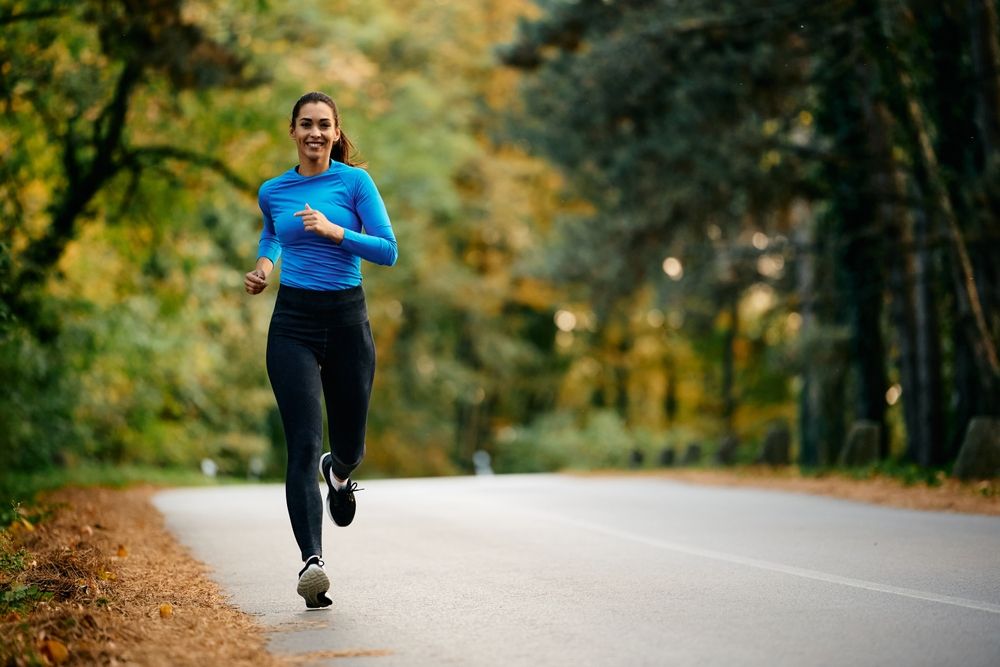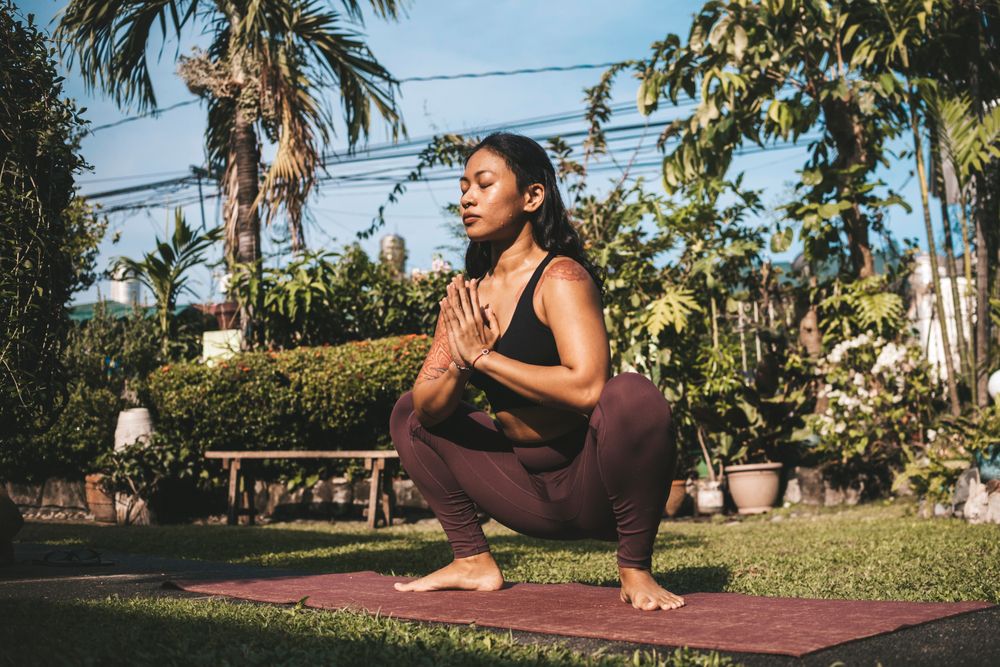
Your 50s are a transformative and empowering stage of life, offering new perspectives on health, wellness, and fitness. While it’s natural to notice changes in your body, this decade is not about slowing down—it's about evolving your approach to fitness. Cardio remains one of the best ways to stay active, support heart health, and maintain energy levels, and with a few smart adjustments, it can be even more rewarding and effective.
As a trainer, I work with many women in their 50s who are passionate about staying fit but seek guidance on tailoring cardio routines to their changing needs. These seven cardio tips are designed to help you maximize your workouts, prioritize joint health, and embrace fitness in a way that keeps you strong, energized, and resilient. From selecting the right activities to emphasizing recovery and mobility, these strategies ensure your cardio routine works with your body and keeps you thriving.
If you’ve been training consistently over the years, don’t let age feel like a barrier—it’s all about refining your approach. With a few thoughtful adjustments, you can continue to thrive and make the most of your fitness routine. Let’s dive into these tips to ensure your cardio workouts remain effective, safe, and sustainable for the long haul, empowering you to stay strong and energized at every step.
Prioritize Low-Impact Cardio

In your 50s, one of the most valuable shifts you can make is incorporating low-impact cardio activities like cycling, rowing, swimming, or brisk walking. Unlike high-impact exercises such as running or jumping, these options are gentler on your joints, which naturally become more susceptible to wear and tear with age.
Low-impact workouts offer the best of both worlds: they elevate your heart rate and deliver an intense workout without putting excessive strain on your knees, hips, or lower back. This approach not only protects your joints but also allows for a more consistent routine, with fewer rest days due to soreness or strain, ultimately leading to better long-term progress.
That said, age alone doesn’t have to define how you train. If you’ve been consistently active, your body is likely well-conditioned to handle a variety of exercises. While incorporating lower-impact options can be a smart way to safeguard your joints, it doesn’t mean you need to dial back your intensity or ambition.
The key is making thoughtful adjustments that allow you to continue challenging yourself while prioritizing long-term joint health and recovery. This strategy keeps your workouts sustainable, reduces the risk of injury, and ensures you can push your limits in a way that feels both rewarding and enjoyable for years to come.
Add Interval Training for Efficiency

Incorporating interval training into your routine is a game-changer for keeping your workouts both efficient and effective. This technique alternates bursts of high-intensity effort with lower-intensity recovery periods, delivering a powerful cardio session in less time.
For women in their 50s, interval training offers additional benefits beyond saving time. It enhances cardiovascular health and boosts your metabolism, resulting in a prolonged calorie burn even after your workout ends—perfect for maximizing results in shorter sessions.
Whether you’re walking, swimming, or using an elliptical, start with intervals like 30 seconds of high-intensity effort followed by 1–2 minutes of slower-paced recovery. This approach allows you to reap the full benefits without overtaxing your body, helping you stay strong, energized, and injury-free.
Incorporate Strength-Based Cardio

Strength-based cardio exercises—like kettlebell swings, battle ropes, or medicine ball slams—are a fantastic option for combining cardiovascular endurance with full-body strength training. These dynamic movements not only elevate your heart rate but also build and maintain muscle, making your workouts more efficient and effective.
In your 50s, strength-based cardio is especially beneficial as it combats the natural decline in muscle mass and helps improve bone density, reducing the risk of osteoporosis. Additionally, the variety these exercises offer keeps your routine engaging, making it easier to stay consistent with your cardio while reaping long-term benefits for your overall health.
Make Time for Steady-State Cardio

While interval training is highly effective, steady-state cardio—such as walking, light jogging, or cycling at a consistent pace—shouldn’t be overlooked. For women in their 50s, steady-state sessions provide an excellent way to build aerobic endurance, lower stress, and stay active while giving your body a chance to recover. This form of cardio is gentler on the joints and muscles, making it a sustainable option for maintaining overall fitness.
Aim to include two to three steady-state cardio sessions each week, lasting 30 to 45 minutes. Beyond the physical benefits, these sessions can serve as a mental reset, giving you a chance to enjoy the movement, clear your mind, and stay connected to your fitness routine in a way that feels rejuvenating.
Focus on Flexibility and Mobility

Prioritizing flexibility and mobility is essential for maintaining a sustainable and effective fitness routine. While often used interchangeably, these terms represent two distinct yet complementary aspects of movement. Flexibility refers to your muscles' ability to lengthen, allowing a greater range of motion during stretches. Mobility, on the other hand, is the ability of your joints to actively move through that range of motion.
Incorporating flexibility and mobility exercises into your warm-up and cooldown routines can greatly enhance your cardio workouts and aid in recovery. As we age, muscles and joints naturally tighten, which can make certain movements more challenging and increase the risk of injury.
Dedicate five to ten minutes to dynamic stretches and full-body mobility exercises before and after your cardio sessions. This practice improves your range of motion, making each movement smoother and more efficient while supporting long-term joint health and overall fitness longevity.
Listen to Your Body's Signals

In your 50s, your body becomes an even more important source of feedback, and learning to listen to it is key. While pushing through soreness or fatigue might have been manageable in your younger years, it’s now essential to approach cardio with a mindset that prioritizes recovery and sustainability.
If you feel unusually tired, sore, or experience any discomfort, consider adjusting the intensity, switching to a lower-impact form of cardio, or taking a well-deserved rest day. By recognizing and respecting these signals, you can avoid burnout and injury, ensuring your workouts remain consistent, enjoyable, and effective for the long term.
Make Cardio Fun and Social

Finally, never underestimate the importance of enjoyment in your fitness journey. Cardio doesn’t have to be a solitary grind on a treadmill—it can become a fun and social activity that keeps you motivated and engaged.
Consider joining a walking club, taking a dance cardio class, or inviting a friend for a hike. Adding a social element brings camaraderie and support, turning your workouts into something you genuinely look forward to. When cardio feels less like a chore and more like a highlight of your week, consistency becomes second nature, helping you sustain those health benefits for the long haul.

